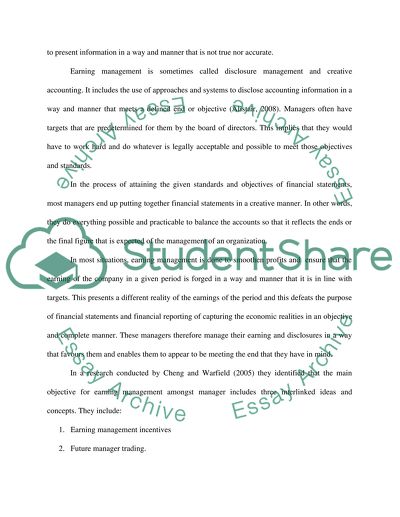Cite this document
(“Finance accounting assignment on earning management”, n.d.)
Retrieved from https://studentshare.org/finance-accounting/1404477-earning-management
Retrieved from https://studentshare.org/finance-accounting/1404477-earning-management
(Finance Accounting Assignment on Earning Management)
https://studentshare.org/finance-accounting/1404477-earning-management.
https://studentshare.org/finance-accounting/1404477-earning-management.
“Finance Accounting Assignment on Earning Management”, n.d. https://studentshare.org/finance-accounting/1404477-earning-management.


